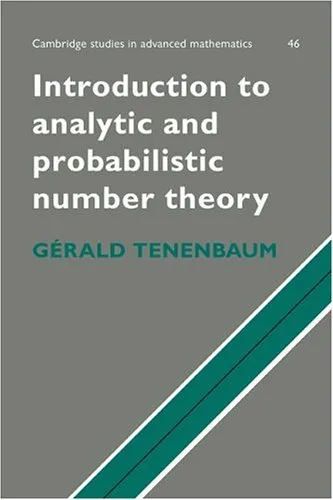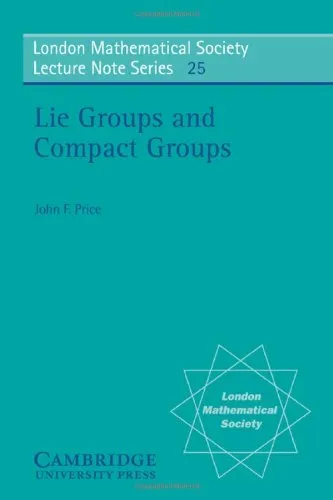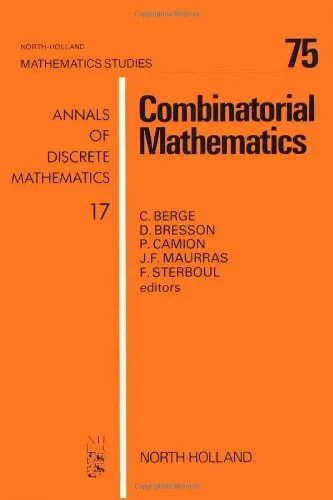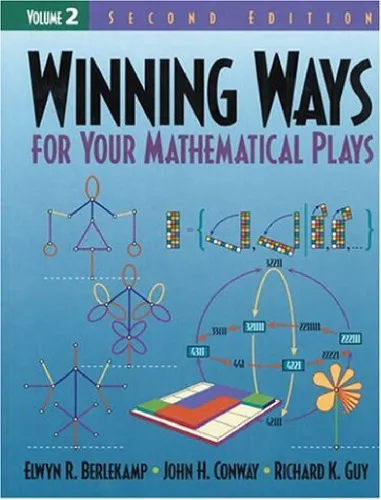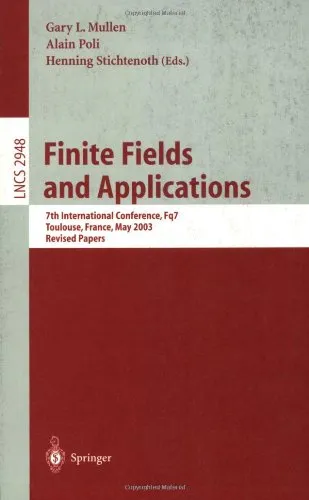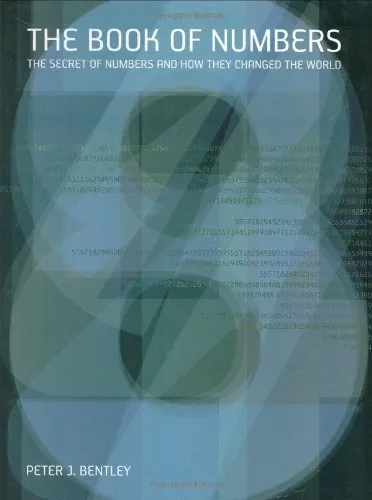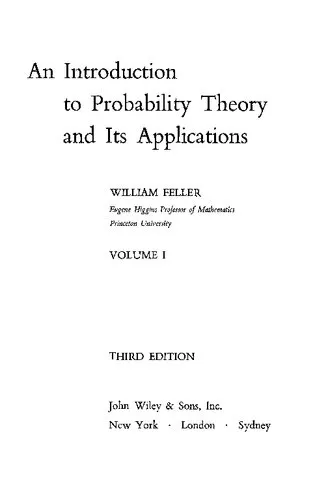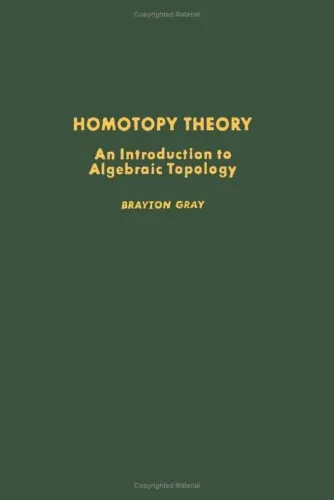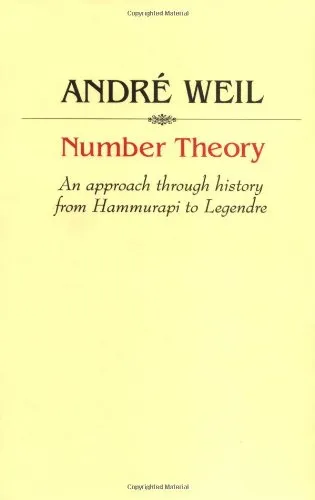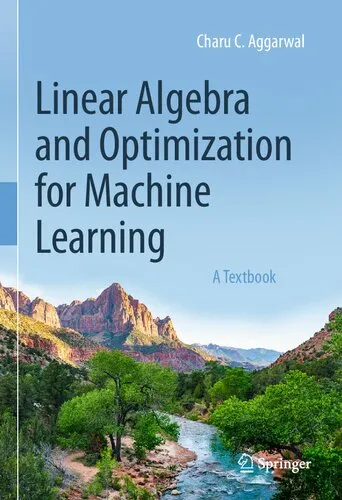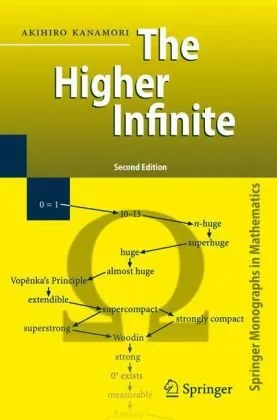Introduction to Analytic and Probabilistic Number Theory
4.7
Reviews from our users

You Can Ask your questions from this book's AI after Login
Each download or ask from book AI costs 2 points. To earn more free points, please visit the Points Guide Page and complete some valuable actions.Related Refrences:
Introduction to the Book
Mathematics is the lingua franca of the sciences, and within mathematics, number theory has always held a place of honor as one of its most beautiful and profound domains. "Introduction to Analytic and Probabilistic Number Theory," authored by Gérald Tenenbaum, offers an intricate yet accessible exploration into this remarkable field. This highly acclaimed book bridges the divide between theoretical rigor and practical applicability, making it an essential resource for students, researchers, and enthusiasts of mathematics.
Combining analytic methods and probabilistic perspectives, Tenenbaum provides readers with the intellectual tools necessary to approach many of the central problems in modern number theory, including prime number distribution, arithmetic progressions, and probabilistic models of number hierarchies. The book strikes a harmonious balance between depth and clarity, ensuring that readers not only gain technical proficiency but also a deeper appreciation for the elegance inherent in the discipline.
Detailed Summary of the Book
The book is centered around two key methodologies in number theory: the analytic approach and the probabilistic perspective. It begins by introducing classical tools such as the elementary theory of primes, properties of arithmetic functions, and the zeta function. From there, the reader is guided through more advanced topics such as Dirichlet characters, Dirichlet's theorem on primes in arithmetic progressions, sieve methods, and the role of density in number theory.
On the probabilistic side, the book delves into models that describe the random behavior of integers. It introduces probabilistic number theory as a tool for understanding distributions and correlations of integers, especially concerning primes or coprimality. Topics like the Erdös-Kac theorem, probabilistic interpretations of additive functions, and random walks on integers are treated with significant detail and mathematical rigor.
Where the book truly shines is in its ability to unify these approaches. By building bridges between discrete arithmetic properties of numbers and their analytic/probabilistic counterparts, Tenenbaum demonstrates how these tools complement and enhance each other. The result is not just a guide to solving problems in number theory but a broader framework for thinking about mathematics.
Key Takeaways
- Gain a thorough understanding of analytic tools such as the Riemann zeta function, Mobius inversion, and Dirichlet characters.
- Master probabilistic methods in number theory, including models for random integers and probabilistic properties of number-theoretic functions.
- Understand fundamental theorems such as the Prime Number Theorem and the Erdös-Kac theorem in both their analytic and probabilistic contexts.
- Learn powerful techniques from sieve theory, including applications to unresolved problems in prime number theory.
- Develop an appreciation for the interplay between analysis, probability, and algebra in tackling questions that have remained central in mathematics for centuries.
Famous Quotes from the Book
"The prime numbers are the building blocks of all integers, and their distribution defines the heartbeat of arithmetic."
"In understanding the structure of numbers, we uncover not just the fabric of mathematics, but also the patterns underlying our universe."
"Probability in number theory offers us a unique lens—one that balances the precision of analysis with the unpredictability of randomness."
Why This Book Matters
Gérald Tenenbaum's Introduction to Analytic and Probabilistic Number Theory stands as a cornerstone in modern mathematical literature. Its importance lies not only in its content but also in its pedagogical approach. The book equips readers with enduring skills, blending rigorous proofs with intuitive explanations, fostering a deep understanding of one of mathematics’ most challenging yet rewarding fields.
Furthermore, the materials covered in the book are foundational to many other areas of mathematics and theoretical computer science, making it a vital resource for anyone looking to extend their mathematical horizons. It matters because it distills centuries of mathematical thought into chapters that inspire, educate, and challenge in equal measure.
Whether one is a student embarking on their journey into higher mathematics, a seasoned researcher revisiting classical ideas, or an enthusiast seeking intellectual enrichment, this book serves as both a guide and an inspiration. It is not just a textbook—it is an invitation to explore and marvel at the infinite landscape of numbers.
Free Direct Download
You Can Download this book after Login
Accessing books through legal platforms and public libraries not only supports the rights of authors and publishers but also contributes to the sustainability of reading culture. Before downloading, please take a moment to consider these options.
Find this book on other platforms:
WorldCat helps you find books in libraries worldwide.
See ratings, reviews, and discussions on Goodreads.
Find and buy rare or used books on AbeBooks.
1486
بازدید4.7
امتیاز0
نظر98%
رضایتReviews:
4.7
Based on 0 users review
Questions & Answers
Ask questions about this book or help others by answering
No questions yet. Be the first to ask!
